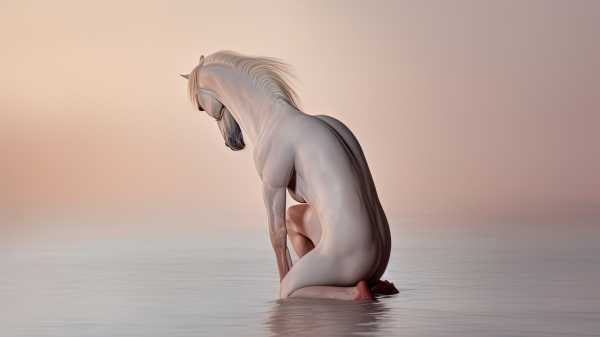
The Pope is wearing Balenciaga. Donald Trump is resisting arrest. Alejandro Jodorowsky’s version of “Tron”? Looks amazing. But, of course, none of these things are real. As A.I. technology advances at a queasy speed, all manner of artificially generated images are flooding the Internet, adding sludge to an already super-saturated visual soup. They fool credulous social-media users and threaten to put people out of work. An A.I.-generated image recently won a prize at the Sony World Photography Awards (the author rejected it); another won an award at the Colorado State Fair. Such incidents have prompted a lot of hand-wringing among artists and critics. Will computer-generated art mean the obsolescence of the artist?
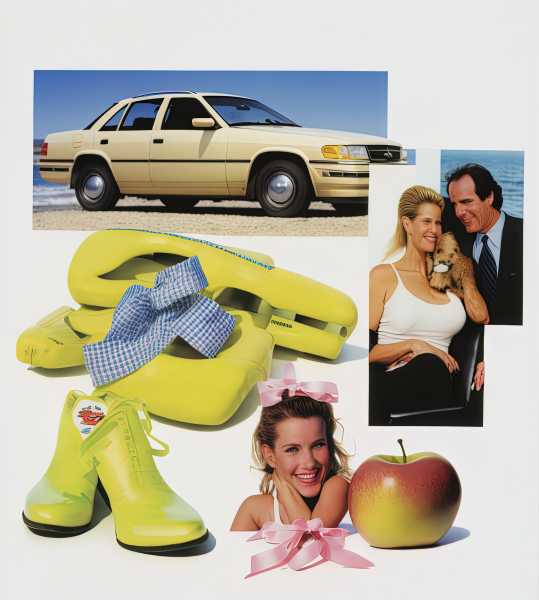
“Apple Layout,” 2023.
Many working artists—3-D modellers, graphic designers, illustrators—have good reason to fear that much of what they do day to day could soon be accomplished by machines. But it’s also true that all “art” made by A.I. is derivative—the programs generate imagery by drawing upon enormous “datasets” of already extant images—and, perhaps as a result, little of it so far rises to the level of audaciously original. The film director Bennett Miller, who spent five years making a documentary about A.I., recently exhibited a collection of nineteenth-century-style A.I. images at Gagosian. A girl in one portrait looks like a mutant version of a Julia Margaret Cameron subject. Another image could be an Edward S. Curtis or a Carleton Watkins. This is neat, I guess, but I can’t get too excited by the idea of using new tech to make fake versions of old things.
The artist Charlie Engman is one of the few photographers who have leaned into the alien logic of the new machine age and found a way to make something that feels new. Previously known for his theatrical, provocative photographs of his mother, Engman has in the past year turned his attention to producing work with the A.I. image-generation software Midjourney. To my surprise, when I reached out to Engman recently, at his Brooklyn studio, he described himself as a “technophobe.” A native of the Chicago suburbs, he studied Japanese and Korean at Oxford University and became interested in photography after stumbling on a book by the Japanese artist Rinko Kawauchi, who makes lyrical pictures of nature and domestic life. In a sense, his foray into A.I. started with a similar process of accidental discovery. On the recommendation of a friend, he started toying around with Midjourney. “For the first while, it was just novel to me—Wow, you can make these funny pictures. But it wasn’t good,” he recalled. “And then, one time, I randomly did make something that I was, like, This is maybe cooler than anything I've ever made. How did that happen?”
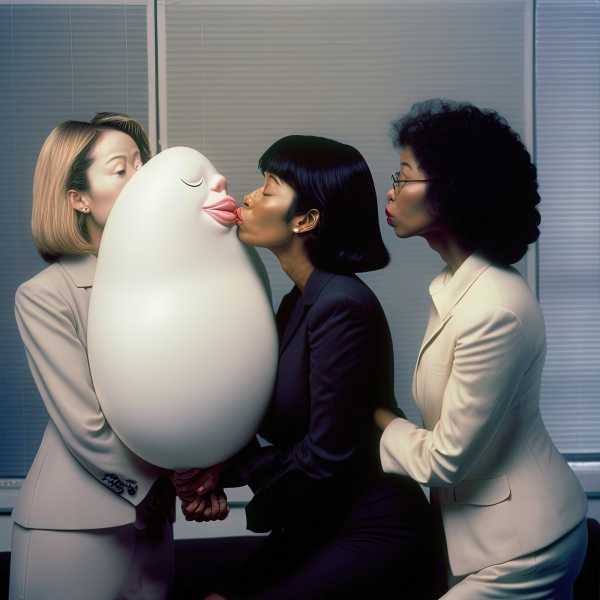
“Office Romance II,” 2022.

“Chair Hug (Black),” 2023.

“Office Chair III,” 2023.
The image in question was of a pair of ginger-haired boys perched on a couch with what looks like a miniature horse. One boy is affectionately nuzzling the other’s face. There is a distant resemblance to Dorothea Tanning’s surrealistic scenes of people and their animals, perhaps, but on closer inspection Engman’s images reveal layers of A.I. oddities. One boy’s legs appear to be merging into the sofa, and his hands have too many fingers (an easy A.I. tell). The lower halves of the second boy and their equine companion both seem in the process of being swallowed up, like loose change, by a black hole between the couch cushions.
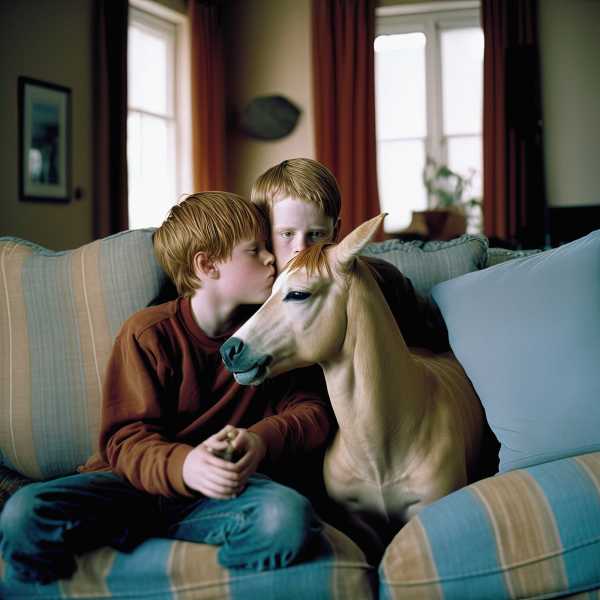
“Pony Couch (Kiss),” 2022.
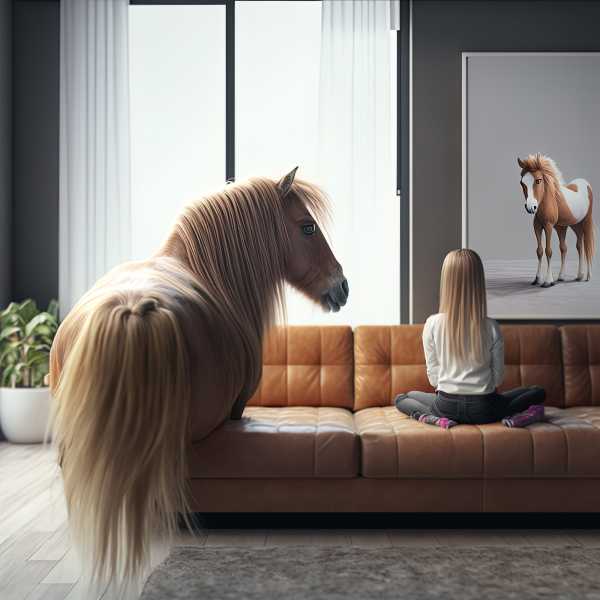
“Pony Couch (Squat),” 2022.
Engman continued to make variations on the “couch with a horse” theme, each one stranger than the next. Like the Midjourney program itself, which responds to prompts with batches of four images at a time, Engman as an A.I. artist is dizzyingly prolific. “The amazing thing about A.I. is that I can make, like, three hundred pictures a day,” he told me, “And every single one of them can be an entirely different set of characters, and new location, and new material. I’m not constrained by physical reality at all.”
Physical reality, of course, is something that A.I. is completely unfamiliar with, a fact that Engman exploits to his benefit. “There was a while where I really loved how it iterated bodies in space,” Engman told me, “I was, like, How does it understand how people sit in chairs? How does it understand how people hug each other?” One series of images he made shows contorted, malformed human figures sitting in and often merging with various chairs, like a freaky update of a series of hilarious photographs by the artist Bruno Munari titled “Seeking Comfort in an Uncomfortable Chair.” Another features groups of businesswomen amorously engaged with a motley collection of semi-humanoid inflatables. My favorite series shows groups of middle-aged suburbanites standing in parking lots kissing. Each configuration looks like a hybrid of an erotic-contact improv troupe and a swarm of feeding lampreys.
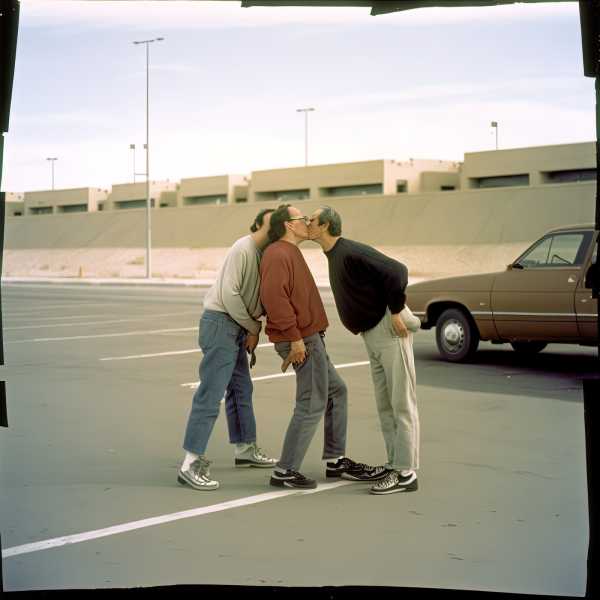
“Parking Lot I,” 2022.
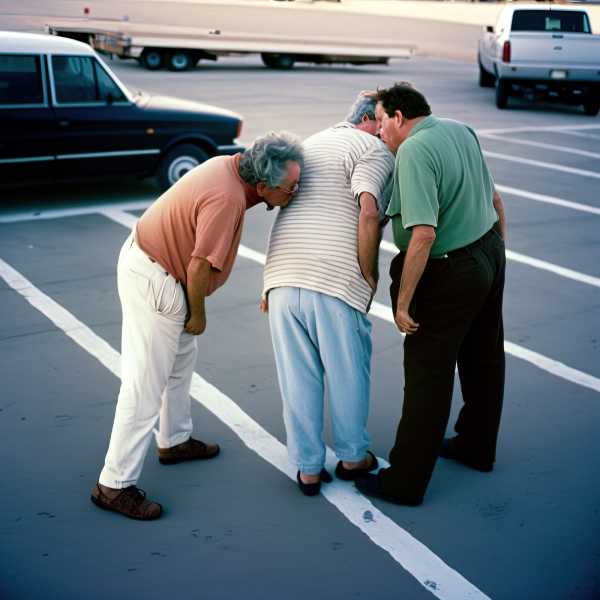
“Parking Lot III,” 2022.
Elsewhere, Engman goads the algorithm into creating creepy malformations of digital flesh. In one image, a fried egg perches atop a sickly shiny, headlike glob, which has a nose and a mouth but no eyes. In another, also reminiscent of Tanning’s work, a woman stands in a field with her face not so much obscured by a sunflower as grotesquely grafted to it. Such scenes call to my mind both the new-flesh body horror of David Cronenberg’s “Videodrome” and the disturbing corporeal distortions of the photographer Asger Carlsen. They also evoke the tech-world ethos of bodies as outmoded encumbrances, mere “meatbags” to be sloughed as our consciousnesses fuse with the digital pleroma. At their best, Engman’s images feel like bizarre new icons of a future that’s already upon us.
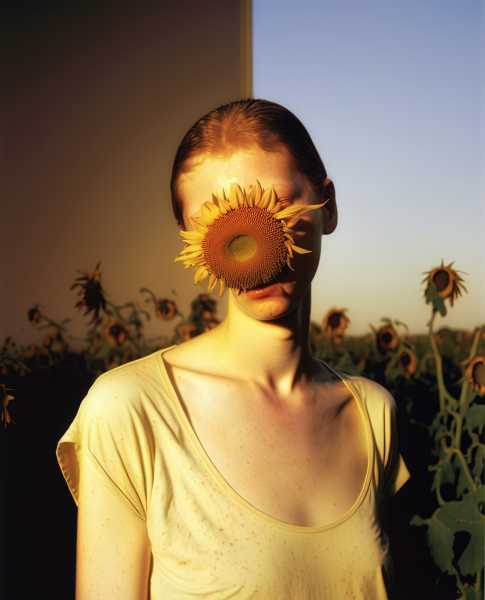
“Sunflower Face,” 2023.
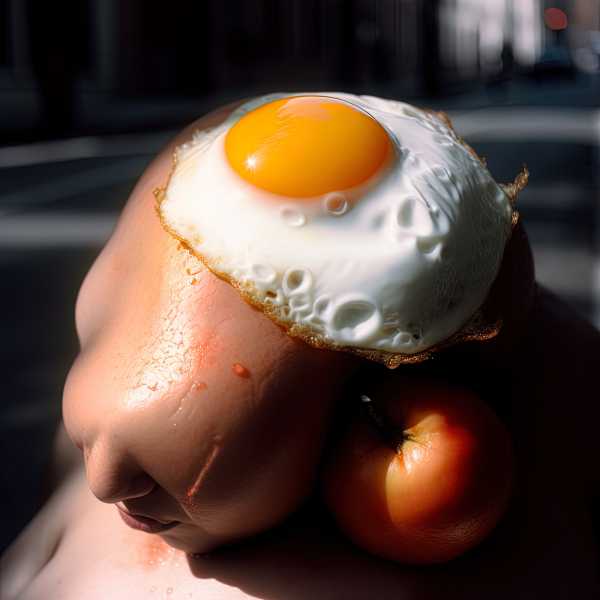
“Fried Egg II,” 2023.
Engman has a cavalier attitude toward the thorny copyright issues surrounding how A.I. programs draw upon image datasets. To him, such “borrowing” is not much different from the way he cherry-picked from a range of aesthetic influences to make his pictures of his mother, or, for that matter, the way that any artist is trained by studying the work of others. Arguments about sampling, appropriating, or remixing artworks or the flotsam of popular culture seem to him painfully retrograde. “Y’all, we are all trained on, like, everything,” he told me. Recently, he has been combining his real-world and computerized photographic interests by making A.I. pictures of his mother. To train Midjourney’s algorithm, he’s been feeding it his old photographs as prompts, resulting in such newfangled scenes as a glowering facsimile of his mom emerging from what appears to be an oozing wheel of soft cheese. I asked him if he had ever tried just writing a prompt using the phrase “Charlie Engman’s mom.” “I have tried that,” he said. “I don’t think I’m famous enough.”
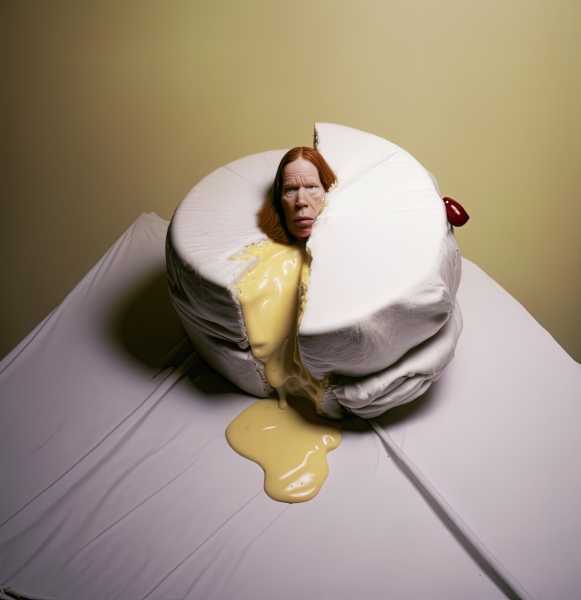
“Mom (Brie),” 2023.
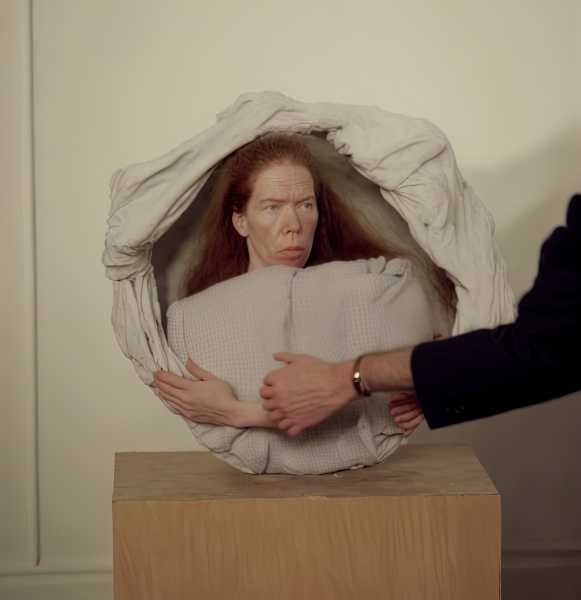
“Mom (Clay II),” 2023.
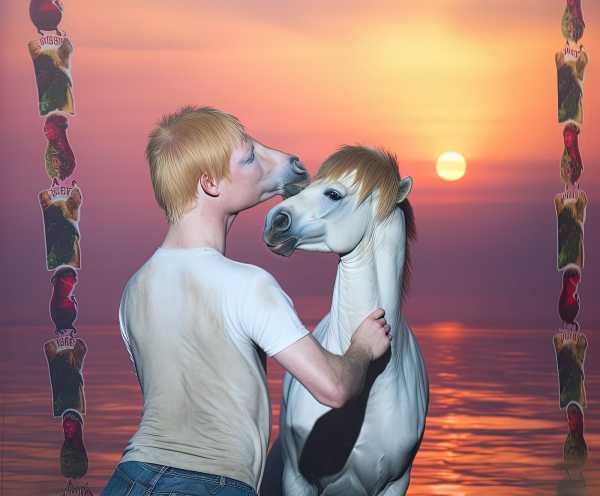
“Blond Horses,” 2023.
Sourse: newyorker.com






